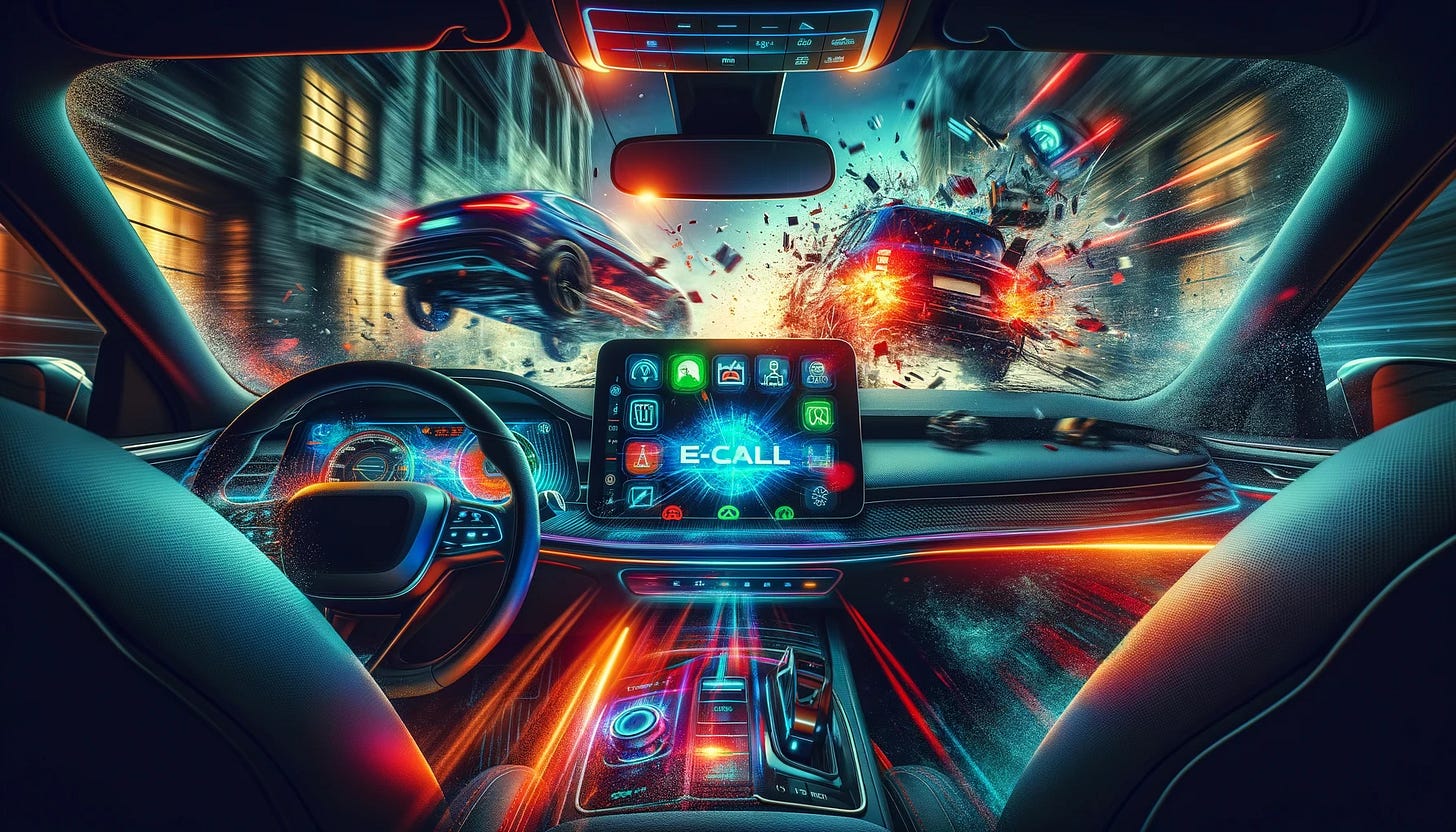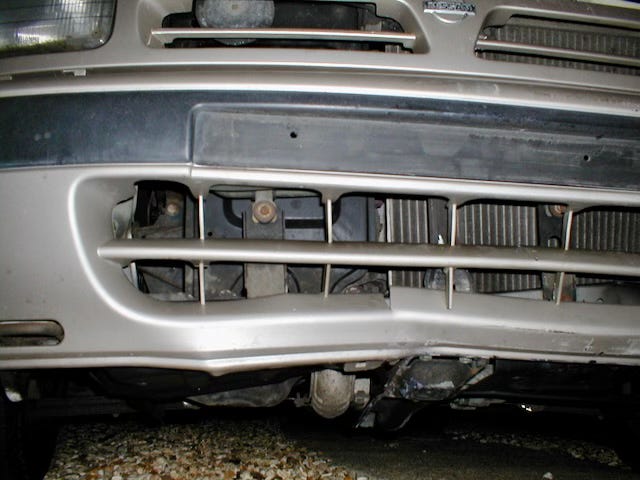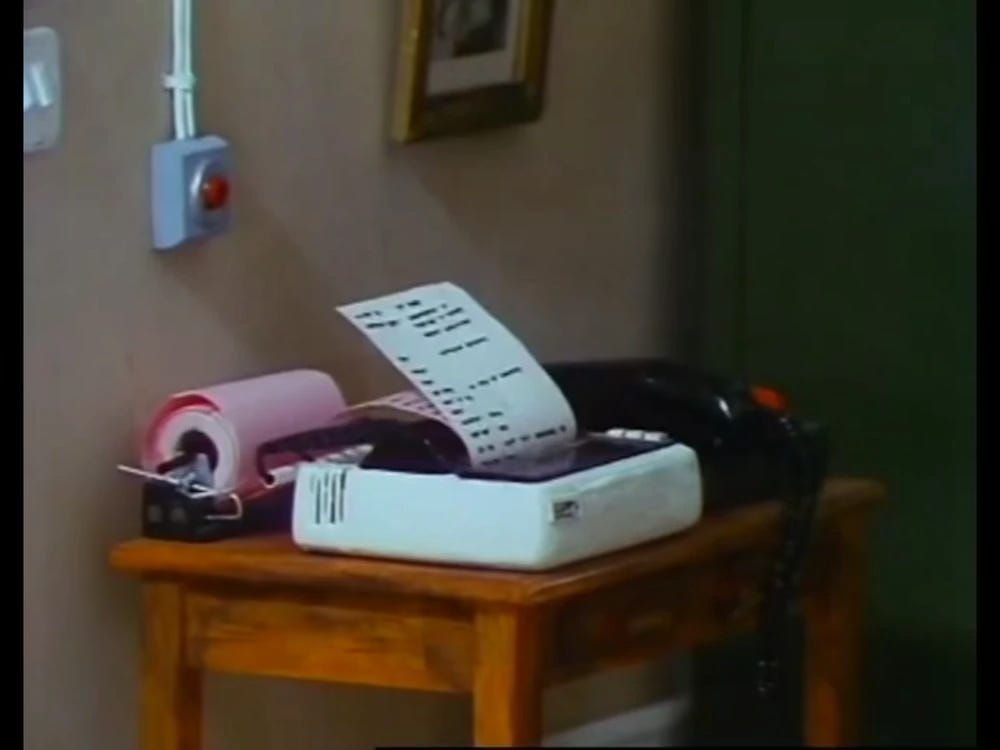There's a technology built into our cars to make driving safer – but we're not using it.
More people should know about this
It was Christmas Day 2004, and for the first time I was behind the wheel of my Mum’s beige Nissan Micra.
I was 17 years old, and had been taking driving lessons for six months. To prepare me for my test, my parents had added me to their car insurance as a Christmas gift1.
So around dusk, my Mum and I headed out for a drive. The roads were almost completely deserted – everyone else in town was at home, enjoying the festivities.
Except for this one guy.
As I climbed one hill, heading towards the bypass, I noticed a cyclist on the road ahead of me. Catching up to him, I realised that there was a traffic island in the centre of the road – this would make moving out to pass him impossible.
Panicking, I reached for the brake pedal, my foot jabbing into an unfamiliar footwell. In my haste, instead of hitting the brake, I accidentally mashed the accelerator, which led to the car jerking forwards at increasing speed towards the cyclist.
So I reflexively tightened my grip on the wheel and yanked it right. Then… thud.
Luckily the cyclist merely wobbled and stepped off his bike in the commotion – I’d missed him entirely.
The bollard on the traffic island though was not so lucky.
And nor was my Mum’s Nissan Micra. When a mechanic saw it days later, he declared the car a write-off2.
Needless to say, it was not a particularly happy Christmas that year.
I share this personal backstory because it vividly illustrates a truth about driving: Accidents can happen at any time. Even on deserted roads on Christmas Day. And each time we get into our cars we’re taking on the small, but non-zero risk that when moving at high speed, bad things can sometimes happen.
Over the last century we’ve got better at reducing this risk. We added seatbelts and airbags. We redesigned chassis to crumple to protect us3. And in more recent times, on-board computers have been added that watch the road around us for other cars, and even help us stay in lane.
But there is one technological innovation that we’re not making the most of, that I think could make a real impact on emergency response times. And here’s the crazy thing – the technology isn’t new. By my reckoning, it can already be found inside around 11m vehicles on Britain’s roads4. We’re just not using it properly.
If you enjoy my writing, subscribe for free to get more embarrassing anecdotes and/or policy chat directly in your inbox. If you really value my writing, please take out a paid subscription so that one day my Mum might finally forgive me.
Introducing eCall
Since 2018, almost every new car sold in the UK has had a special “SOS” emergency button somewhere within reach of the driver. With a single press, it will directly connect you to the emergency services. It’s a system known as eCall5.
No, until a few weeks ago I didn’t know this was a thing either, because I drive a knackered old Vauxhall with a CD player and broken parking sensor6. But readers with fancier cars may have noticed it on their dashboard – not that many people really know what it actually does.
The way eCall works is that it uses a cellular modem that was previously dormant inside your car, and it uses any available phone network to make the emergency call. In fact, you may not even need to press the button. If your airbag is deployed, the car will dial the SOS call automatically, as that’s a sign that something bad has happened7.
It’s a neat idea – obviously the thinking behind eCall is that it can further reduce emergency response times, when literally every second counts8.
But what makes the system even smarter is that along with the voice call it also transmits a packet of data to the emergency services.
This packet contains a bunch of information that you can imagine would be really useful for the emergency services to know:
The Vehicle Identification Number (VIN) – a unique ID for the car that, unlike the numberplate, cannot change.
The type of fuel the car uses.
The number of people in the car.
And whether the eCall alert has been triggered manually with a button press, or automatically by the car (which might indicate that you’re incapacitated.)
It also sends the car’s location based on the internal GPS chip – but it actually does something much smarter with this. Instead of just sending the current latitude and longitude numbers, it actually sends the last three location coordinates it logged, and details on which direction the car was travelling.
That way, if you’re in a crash going eastbound on the motorway, it means that the emergency services won’t approach from the west and be stuck six lanes of traffic and a central reservation away from you. And by using the last three location markers, it means that even if you are knocked off the road, it’s possible to work out how you got to where you are, to make recovery easier.
This all sounds pretty useful, right? However, this is the thing that surprised me: Even though this data packet is being transmitted by thousands of cars experiencing emergencies every year, in many cases it isn’t even being used.
Emergency calls
When an emergency call is made by eCall, just like with a phone, it is routed to a regional 999 call centre. There are seven around the country, and they are run by BT.
At the same time, the data packet containing all the metadata described above is stored on a BT-operated database.
So when you speak to the operator, they will use the database to view your location on a map, and it is their job to triage the call and patch you through to the relevant emergency control centre – so usually the police, ambulance or fire service.
And this is where the vehicle data hits a bump in the road.
It’s hard to speak in general terms, as emergency services are also organised on a regional basis by local authorities. This means each area and emergency service will have different systems and software that they use. But my understanding is that in many cases, many services do not have systems that can talk to BT’s eCall database and pull down the relevant data for the call they are handling.
So while some police, fire and ambulance services are hooked up to the database, others are not9. I’ve heard stories about how this means that 999 operators will sometimes have to waste critical time on a call by reading out latitude and longitude numbers to, say, the fire brigade, over the phone – instead of the accident coordinates being transmitted digitally in an instant.
And this is obviously not ideal in situations where every second counts.
Sharing the data
So we have a big database, full of useful metadata from eCalls – and if it could be better joined up with all of the different organisations involved in responding to incidents, it could make the first responders more effective and road travel safer.
But how exactly?
To illustrate this, imagine if systems were joined up and firefighters had the relevant eCall data available on their own systems.
Before leaving the station, they’d know how many people needed rescuing (based on vehicle occupancy), so they would know how many engines and fightfighters to send. And because they know what type of fuel the car uses, they could load the fire engine with the right sort of suppressant to tackle the most likely type of fire.
The system could also conceivably use the VIN number to automatically look up the exact make and model of the crashed car, so as they’re speeding to the crash, they could have an iPad brief them on how to most effectively cut someone out of that model of car, instead of needing to improvise on arrival.
However, blue light services are just the start. The eCall data could conceivably be used further down the response chain too.
For example, as things stand when an incident occurs on the roads, there has to be a manual communication between, say, the police and National Highways, the agency that looks after Britain’s major roads.
But if this process was automated with eCall data getting automatically passed on, National Highways would be able to more quickly manage traffic to avoid the accident. If the incident is on a ‘smart’ motorway with variable speed limit displays, traffic could be slowed down more quickly to reduce the risk of further accidents or a pile-up as other cars run into the incident.
Then there is the benefits for ordinary motorists. If incidents were reported more quickly, Google Maps or your in-car GPS could reconfigure your journey to route you around the problem. Or the VIN data could be used by apps to warn motorists to drive carefully when approaching a beige Nissan Micra, which has just been involved in an accident.
And depending on how widely the data was shared, there could be other uses too. For example, the VIN number could be used to automatically look up registration details of the driver or the fleet owner, to stop deliveries getting knocked off track, say10.
I’m sure you can think of other uses for the eCall data too – let me know your ideas in the comments as I know you’re a smart bunch.
Driving to distraction
The obvious question to ask then is why, if eCall data is there, is it not being used? Especially given the data has been collected since 2018. It feels like there’s a really great, relatively straightforward policy ‘win’ here, to make everything just work a little bit better – a bit like liberating the Postcode Address File.
And here I think the explanation isn’t because there’s some villain who wants driving to be more dangerous, but for more boring institutional reasons: This is a weird and obscure thing, the emergency services are uniquely un-joined up, so different regions have different systems and different capabilities11. And, well, not many people know that eCall exists in the first place.
But now, having read this, at least you know about it. And hopefully a few more people will too. And perhaps in a few years, the systems will be fully joined up, so that driving will be even safer. Even when there is a fucking moron driving a Nissan Micra on the road.
Subscribe (for free!) to get more nerdy politics, policy, transport and media takes direct to your inbox. Or if you really value my work, a paid subscription helps me keep doing this every week.
Oh, and follow me on Twitter (and BlueSky I guess).
This isn’t like America, where TV gives me the impression that every teenager has their parents buy them a car when they learn to drive.
The bollard was essentially empty inside, with just a light-fitting on the ground, so as quickly as the car had run it down, it bounced right back up. This scraped up the bottom of the car but amazingly, afterwards the bollard was completely unscathed by the encounter.
Yes the plural of “chassis” is “chassis”.
Based on eyeballing the SMMT chart of new car sales data since 2018, anyway.
This is another thing we can thank those meddling red-tape pushing Brussels bureaucrats for, with their jackboots on the neck of every Englishman who dreams of dying in a road traffic accident.
I did finally pass my driving test… two years later when I was 19.
Also interesting to note it is privacy preserving – the modem only activates and connects to a network once the button is pressed.
There’s actually some debate over whether the “golden hour” – the idea that you’re more likely to survive a crash if treated in the first hour – is real or not. I’m not smart enough to understand the scientific literature so you can argue about this in the comments. My layperson read on this though is that criticism of the concept is basically just pissing about over resource allocation and whether it makes a difference for different types of trauma – but nobody seriously disputes whether a fast response is better than a slow one.
I’m told police services are generally more often connected to it.
I don’t think you’d want the incident database to be pure open data. Both for privacy reasons, but also because you can imagine it being used by literal ambulance chasers looking for new clients.
Perhaps not coincidentally, I understand Scotland, with its empowered regional government and centralised public sector is ahead of the rest of the country on this. Another argument for more devolution, less local and more regional government.






I remember a couple of years ago, driving in the US, when my car was t-boned by another driver who'd failed to notice his traffic lights were on red.
As the car was spinning (fortunately not turning over) around I remember being showered in glass and the car casually informing me that passenger side airbags had been deployed and emergency services had been contacted and were on their way
A bizarre thing living in an affluent area of the Chicago Northshore is seeing children (aged 16) driving their parents massive Cadilac SUVs that cost more than my first flat in the UK
As I understand it, excessive speed is still the biggest factor in both causing crashes and determining their severity. So the best use of this technology is surely to use the onboard GPS to force cars to stick to the posted speed limit and/or log vehicle speed so this data can be used to inform an accident investigation